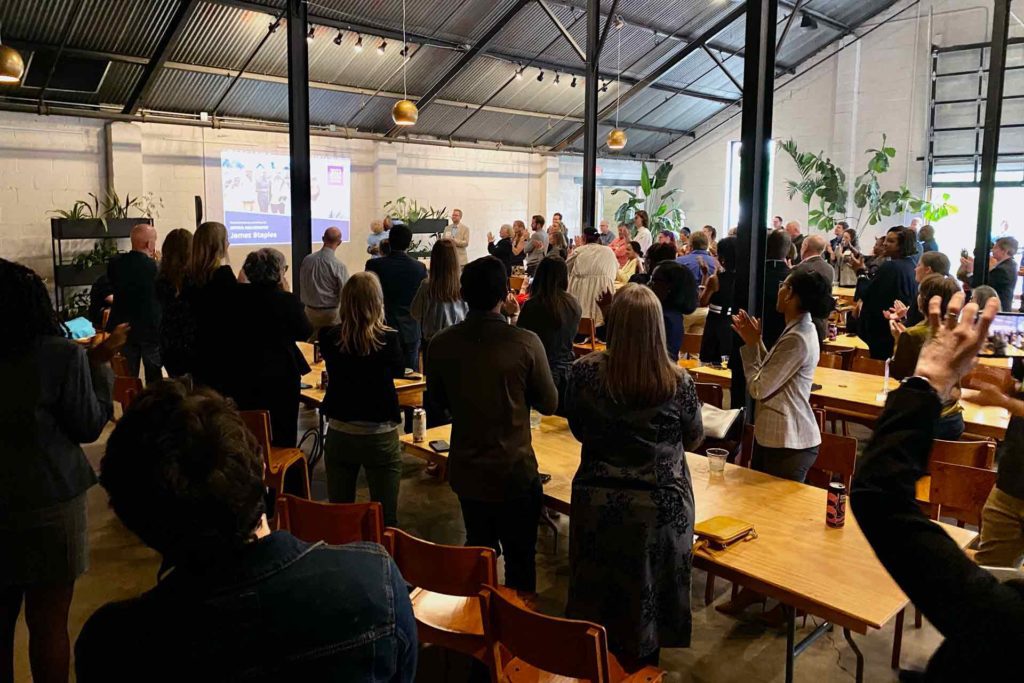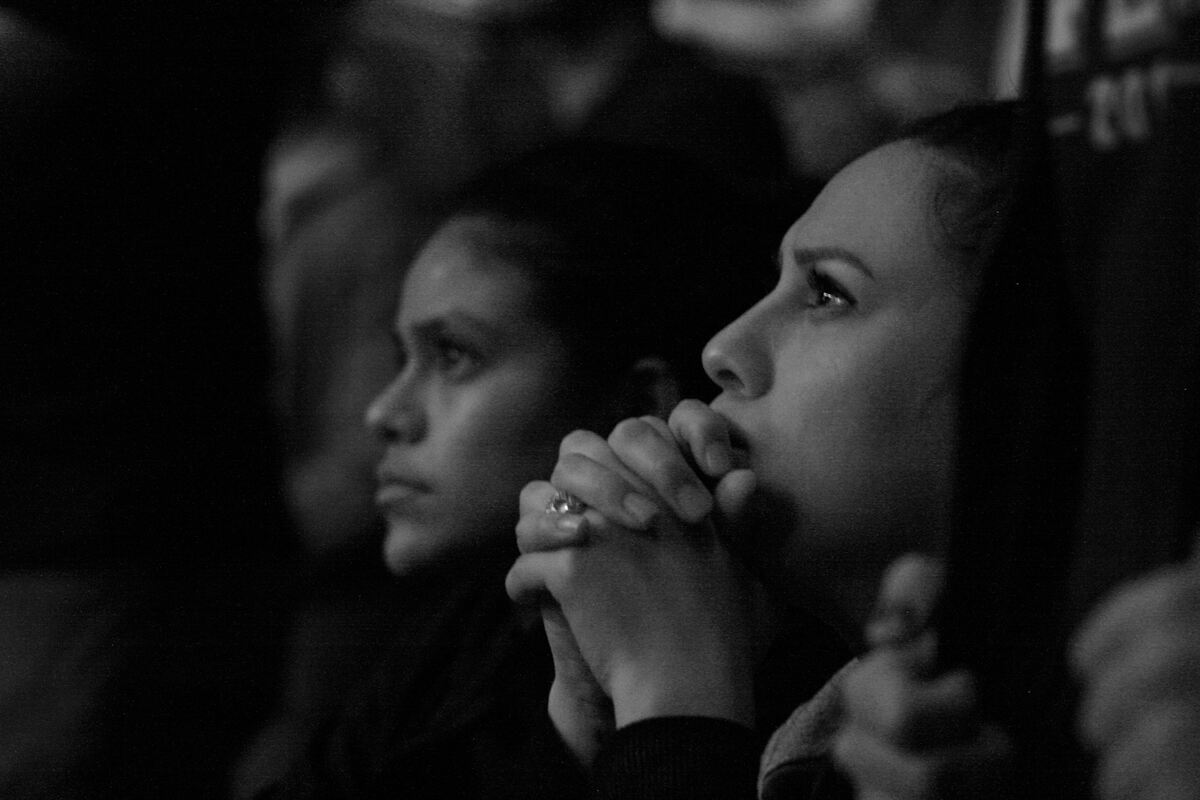Whether this is your first interview or your first time chatting with your interviewee, this article will guide you on how to get people to open up in storytelling interviews and share with emotional depth.
I understand you might be tasked with telling a story for your company. Not just any story but about a program participant, client, or customer.
But what if the person is shy or seemingly disinterested?
They may give informative answers, but they lack emotional punch. So, how do you have a resonating interview? How will you create an environment that encourages them to open up to you?
Table of Contents
- Proving You Care is Key to Building Trust In Storytelling Interviews
- Caring through Active Listening
- Caring by Asking Different Questions
- Real-Life Example: Building Trust in A Storytelling Interview with Jamez Staples
- Giving People Your Attention Can Get Them to Open Up in Storytelling Interviews
- Related Articles
Proving You Care is Key to Building Trust In Storytelling Interviews
In my daily interactions with humans, they don't openly share about themselves.
Heck, neither do I. So why is that?
People need to feel you care before they share.
Often, I feel uncared for when people ask how I'm doing while walking by. Their action shows they’re unwilling to hold space for my response. Thus, I feel unsafe sharing how I'm doing.
It is arrogant to assume your story-sharer will pour their heart out to you simply because they volunteered to share their story.
Building trust in storytelling interviews starts with earning their confidence and doing it quickly.
You must earn their trust and do it quickly.
Now, let's discuss two ways I successfully built trust.
Caring through Active Listening
I believe a lot of people listen more passively than actively. The former requires less work than the latter.
According to the American Physical Association (APA), active listening involves listening closely and asking questions to fully understand the content and depth of emotion.
Therapists apply this technique.
They often restate what's said to ensure understanding. The APA says active listening is associated with client self-discovery in client-centered therapy.
Please do not misinterpret my words. Yes, I am implying that story-listening is like therapy.
To get people to open up in storytelling interviews, you must approach them with that level of respect. You ought to approach your following interview with that level of respect.
If not, we're exploiters, seeking to gain from their story without showing gestures that honor the person and their offering to us.
4 Core Tips for How to Active Listen
Googling "how to actively listen" will result in hundreds of pages. Here are four core tips that I regularly use for our video marketing and nonprofit storytelling.
- Reflect by repeating core words and summarizing.
- Use Nonverbal cues (e.g., eye contact, head nods, facial expressions) to show your listening.
- Look for gaps or connections in their thoughts.
- Ask follow-up questions.
For additional tips, check out these resources:
- What Is active Listening (Very Well Mind)
- How to Become A Better Listener (Harvard Business Review)
- 10 Tips for Active Listening (British Heart Foundation)
Caring by Asking Different Questions
The familiar is comforting in some instances and numbing in others. Familiar questions are the latter.
In America, "How are you?" is synonymous with "hello." I avoid asking, "How are you?". People reply automatically to that specific question without thinking. The default answer is usually "I'm good."
LIES!
Therefore, I ask, "What are three words to describe your week?" This simple yet different question signals the person to turn off auto-pilot mode and explore a thoughtful answer.
Some of My Go-To Different Questions
- What are three words to describe your week?
- What are you currently looking forward to?
- What are 2-3 things you can talk endlessly about?
- What do you bring to the table that's unique to you, something that others don't?
- If I asked your friends, what is one thing that is most different about you?
Lean Into the Power of Novelty
Asking unique questions taps into the power of novelty and helps build trust in storytelling interviews. The Von Restorff Effect shows we remember what stands out—like a purple cow among black and white ones. Unique questions provoke thoughtful answers. Follow their response with curiosity:
Ask different questions → Get a unique reply → Dig deeper → Dig deeper again.
Use follow-ups like:
- "Can you tell me more?"
- "Why do you feel that way?"
This approach moves beyond surface-level answers and uncovers meaningful stories.
Real-Life Example: Building Trust in A Storytelling Interview with Jamez Staples
At BairStories, we've been a storytelling partner for the Environmental Initiative Awards. We tell award recipient stories and screen them at an annual celebratory event.
One year, due to scheduling, we only had 30 minutes to speak with Jamez before filming his interview. Those 30 minutes were on location the day of filming.
As the Producer/Story Director, I eased into the conversation with small chatter like:
- Congrats on the award.
- Were you born and raised in Minnesota?
- What inspired you to pursue this type of work?
This later progressed into a deeper conversation about his Christian faith. I openly shared my journey and struggles as a Christian to create a space of honesty and vulnerability.
During his on-camera interview, I asked deeper and more personal questions about his feelings, and BOOM!
One question knocked on the door of his vulnerability. With tears in his eyes, he got deep and explained how he felt during a discriminative experience.

On the award night, as his video story ended, the room of people rose like fans in a stadium after their favorite team's big play. The sounds of clapping hands trembled the floor.
Due to the abovementioned principles, he trusted me enough to be vulnerable. This vulnerability made his story more compelling, which moved people.
He was seen and heard.
Giving People Your Attention Can Get Them to Open Up in Storytelling Interviews
I know that being seen and heard is a fundamental human need because I’ve often felt unseen. Why not offer this gift to your interviewee? When you get people to open up in storytelling interviews, you’ll gain connection and, most importantly, a richer story for your marketing.
Not everyone will feel comfortable sharing deeply, and that’s okay. If needed, consider telling someone else’s story instead. Conducting pre-interviews is helpful in this regard. Pre-interviews help identify who is most comfortable and willing to share their story.
In closing, to get people to open up in storytelling interviews, build trust by actively listening, asking unique questions, and creating a safe space for sharing.
Now that you know how to approach your upcoming interview, check out these six questions to create a heartfelt impact story.
Related Articles
OpenAI’s ChatGPT and Grammarly were used for revisions and feedback. Check out our AI Ethical Use Statement.
